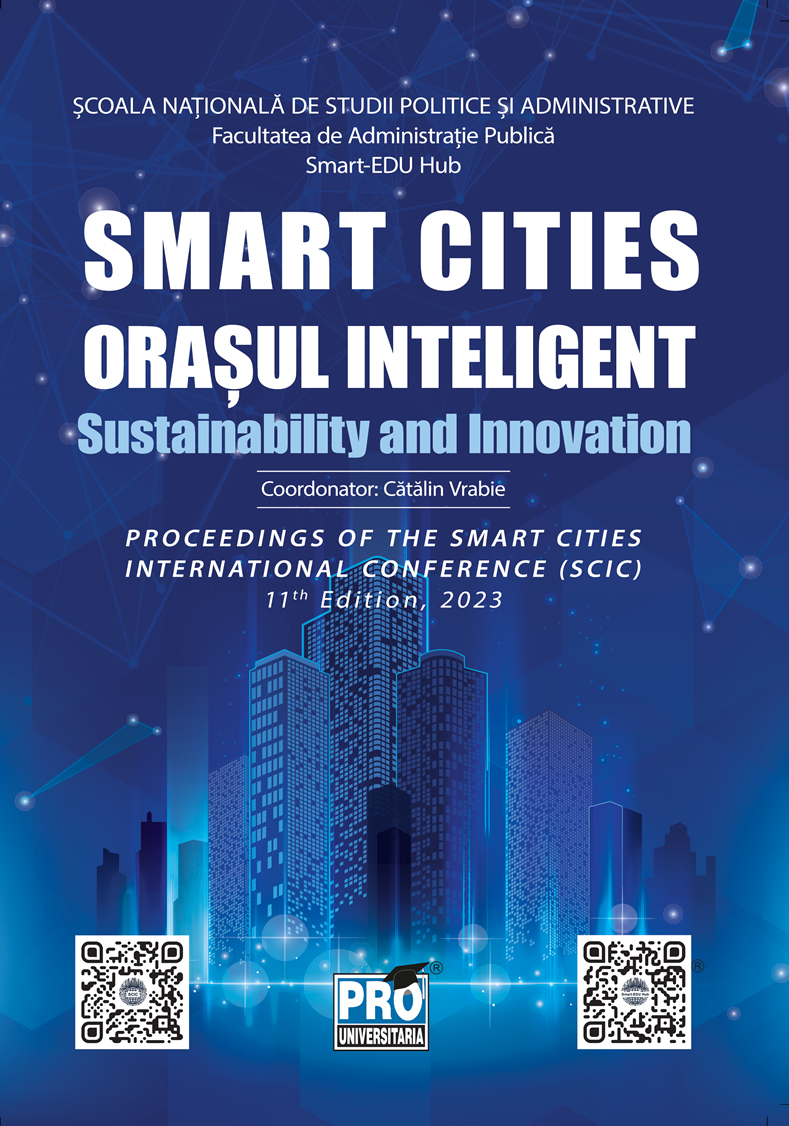Energy ecosystems layered over hydrogen valleys for sustainable smart communities. Strategic framework for the Green Deal Industrial Plan implementation in Romania
Keywords:
sustainable development, renewable energy, economic ecosystems, organizational design, green hydrogenAbstract
This research effort aims to obtain a clear and concise image of the organizational environment in Romania, currently operational in economic ecosystems built around host cities that sustain their societal dynamics based on corporative value chains. In order for cities to thrive, we propose the adoption of the continental framework for sustainable economies, having sufficient normative and regulatory elements to build a strategic analysis in support of a swift transition of industries and transportation, and the cities they influence, to sustainability. The research objectives are to analyse the main economic stakeholders organizational design and behaviour in their host communities, their relationship with the local and central public administration, and build new synergies based on opportunities to finance sustainable development, starting from renewable energy and green hydrogen as main catalysers for the transition. The research is an evolution of our prior “The Smart Community: Strategy
Layers for a New Sustainable Continental Framework”, a quantitative study of the European regulatory framework for sustainability, that now demands a thorough examination of the implementation methods in member states. The examination aims to obtain data regarding the organizational impact on the host community, and extended influences on the value chain, data to be used in a hypothetical optimization scenario based on renewable energy resources financed from power purchase agreements, a consolidated intra-industries demand for green hydrogen in industrial processes and transportation for a green energy demand forecast, the European, central and local governmental intervention in subsidizing the effort to build new resources and the social effects of a renewed approach to business administration. Considering the Paris Agreement and European Green Deal, several academic efforts are visible on defining the transition mechanisms to sustainable economies, providing sufficient information for best practices and successful implementation examples, studies to be used in a qualitative review of academic literature to sustain the concepts herein. The study and research result in a conceptual framework and strategy for industrial and value chain pivot to sustainable practices, based on a geographical segmentation of Romania into regions of interest selected due to specific infrastructure characteristics, energy resources, access to technology, access to human resources, etc. Implications for the academic sector and researchers abound, as this theoretical approach will include industrial sectors in defining a base-line for their legally mandated effort to comply with costly regulations, confronted with social tension regarding the effects of enterprises within communities they operate in, approach that translates into net value for governmental, corporative, academic and social stakeholders in our effort to clarify the benefits and hurdles
implied by sustainability.
Downloads
Published
Issue
Section
License
Copyright (c) 2024 Vlad STOICESCU, Catalin VRABIE, Teodora BITOIU

This work is licensed under a Creative Commons Attribution-NonCommercial-NoDerivatives 4.0 International License.


